Did you know that Singapore has an island called Frog Island? The Malay name for this island is known as "Pulau Sekudu". In Chinese, it is called 青蛙岛.
Pulau Sekudu is an small island located just south of Chek Jawa, Pulau Ubin. It is a restricted area and permit from the National Parks Board (NParks) is required to gain access to this island.
The Google map above show you the location of Pulau Sekudu (south of Pulau Ubin, north of Changi Village).
My first trip to this island was in August 2013 to conduct a similar survey of the marine life on this island. You can read more about the animals I saw during that trip
here.
As the tide recedes, Pulau Sekudu "grows" in size as the intertidal zone is being exposed. However, the tide was not the lowest today, so the island was not fully exposed.
On a not very good start, my first animal encounter was a dead fish. Could this be a dying fish that floated over from a nearby fish farm?
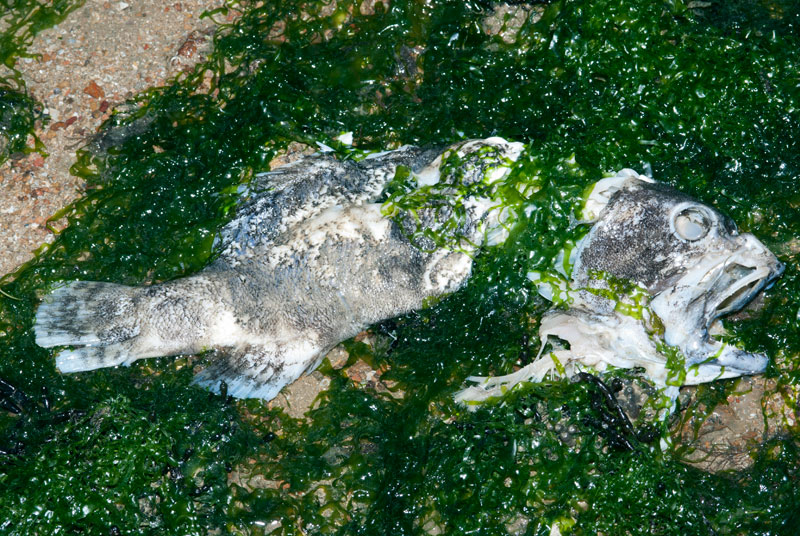 |
| Dead fish |
As I approached the dead fish, a large fly kept circling near my head till I was a distant away from the fish. How annoying. There was no decomposing smell of the fish though.
There were many
stone crabs (
Myomenippe hardwickii) out on the shore. Some of them was seen alone while some were in small number hiding in a large rubble.
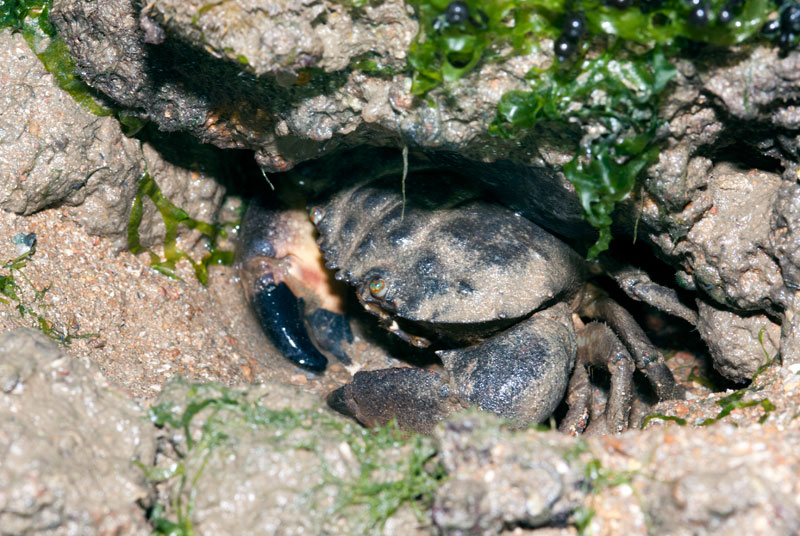 |
| Stone crab |
If observed carefully, some of these stone crabs are actually female crabs with eggs!
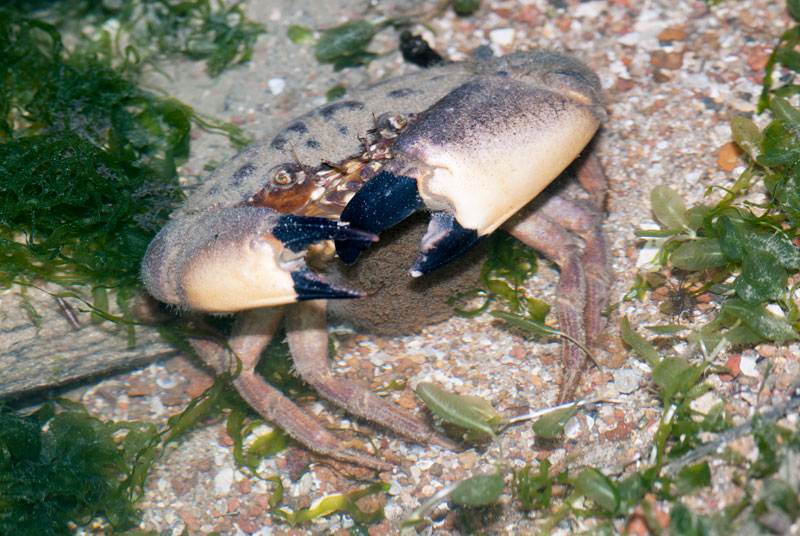 |
| Female stone crab |
The sea lettuce seaweed seems to grow in abundance on Pulau Sekudu. In many areas, they formed a thick carpet over the shore and
spoon seagrass (
Halophila ovalis) meadow. On every spot of the sea lettuce and spoon seagrass mix, there are lots of activities going on. The full moon seemed to activate a bursting activity from the
snapping shrimp of various sizes, many of which are seen out of their burrows.
 |
| Small snapping shrimp 1 |
 |
| Small snapping shrimp 2 |
 |
Average sized snapping shrimp.
Realised that the tail looked like it has a pair of eyes staring at you. |
Sometimes, you can even find an
elbow crab staring at you.
 |
| Elbow crab |
The
brown shore goby (
Drombus triangularis) is found at the entrances of many snapping shrimp burrows or near by.
 |
Borwn shore goby at the entrance of a snapping shrimp burrow, with its shrimp partner right behind it.
[Can you see the snapping shrimp?] |
Also plentiful on the sea lettuce seaweed are small translucent shrimps. They are quite still staying on the seaweeds with little sudden movements so it is quite easy to spot them when you take a closer look at the seaweeds.
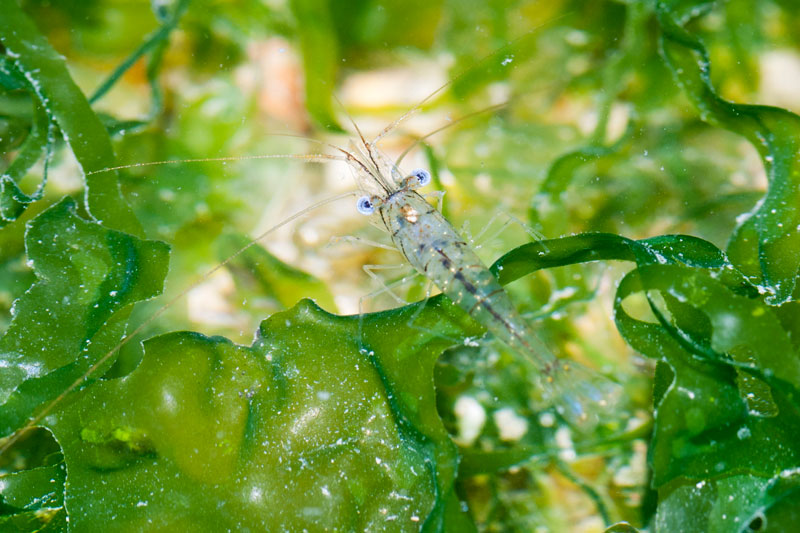 |
| Tiny shrimps |
 |
| Another tiny shrimp |
However, there is one animal that is rather transparent, difficult to spot and retracts quickly. It is the
transparent spoke anemone. I was lucky to have spotted this anemone while wanting to check out other animals on the sand. From the photo, you can tell how hard it is to document and see this animal. If not for a pair of brown translucent tentacles, I would not have seen this anemone.
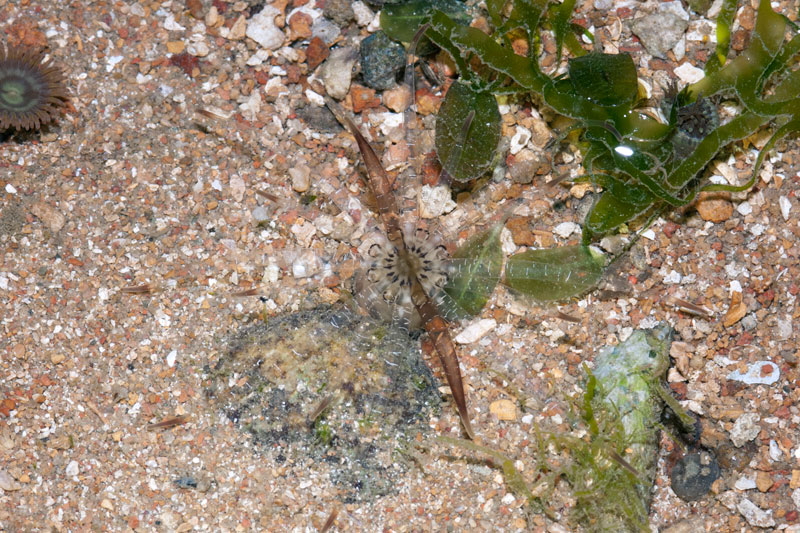 |
| Transparent spoke anemone |
 |
| Another angle of the transparent spoke anemone |
I was actually looking at this
plain sand star (
Astropecten sp.) before noticing the transparent spoke anemone.
 |
| Plain sand star |
Many times the shores looks rather boring and dead. That is because many animals stay buried in the sand, but some of them do leave traces of their presence. Can you guess who these two animals are?
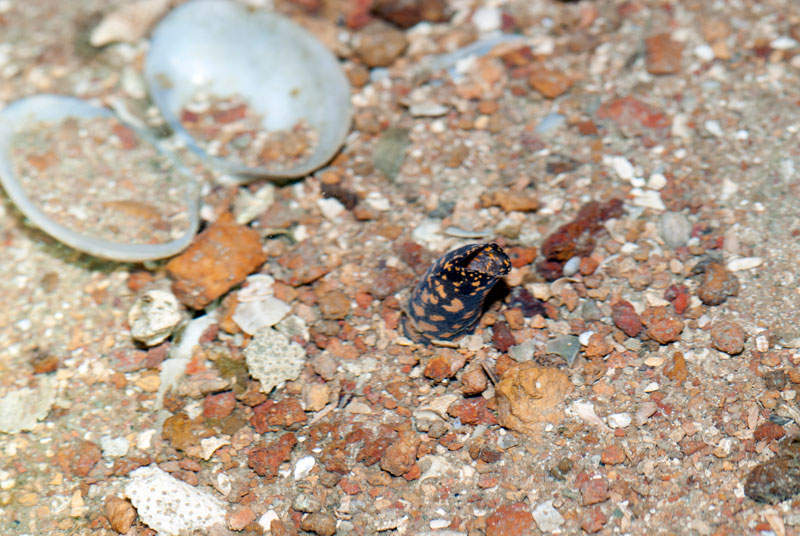 |
1. Who am I?
[Hint: Snail] |
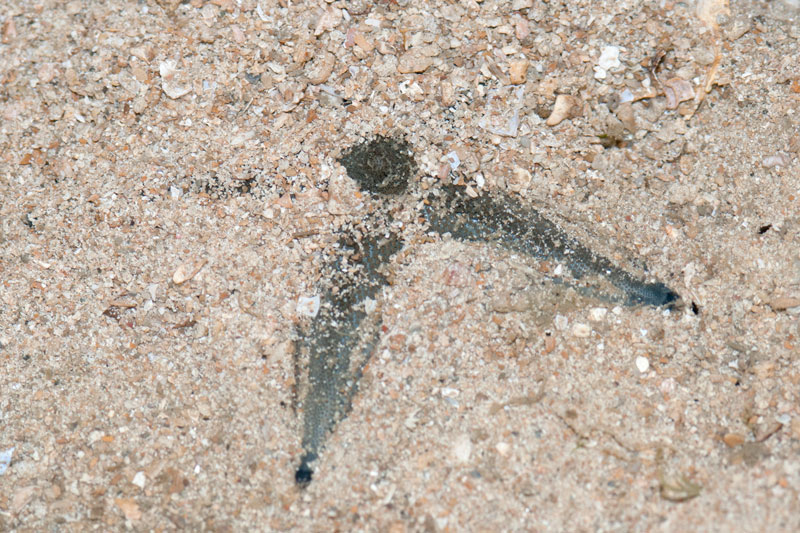 |
| 2. Who am I? |
Let me reveal the answers at the end of the post.
Other than the plain sand star, I also came across a few
crown sea stars (
Aquilonastra coronata) of varying size. Usually, they are spotted under stones or on coral rubble. However, the ones that I saw were wondering on the sea lettuce seaweeds. the rest of the team came across a pretty orange variation of the crown sea star. Sometimes, we call them rock sea stars.
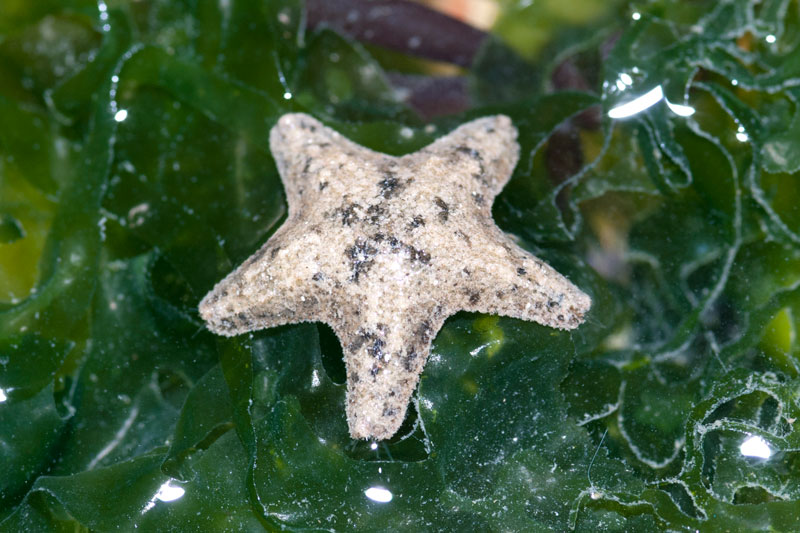 |
| Crown sea star 1 |
 |
| Underside of crown sea star 1 |
 |
| Crown sea star 2 |
 |
| Underside of crown sea star 2 |
 |
| Comparing the cron sea star 1 and 2. |
I also came across a few
biscuit sea stars (
Goniodiscaster scaber).
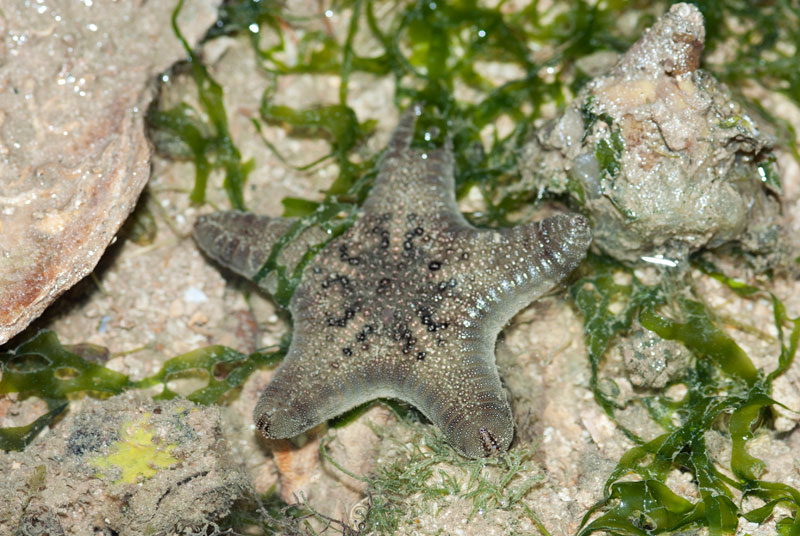 |
| Biscuit sea star |
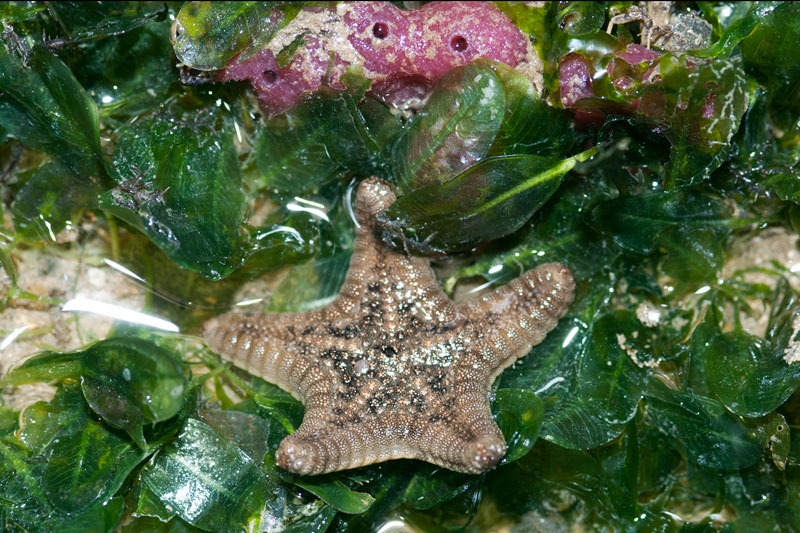 |
| Small biscuit sea star, near a pink sponge. |
Oh... what a pretty
feather star. This feather star was found at the side facing Pulau Ubin. It looks very similar to seaweed it was resting on.
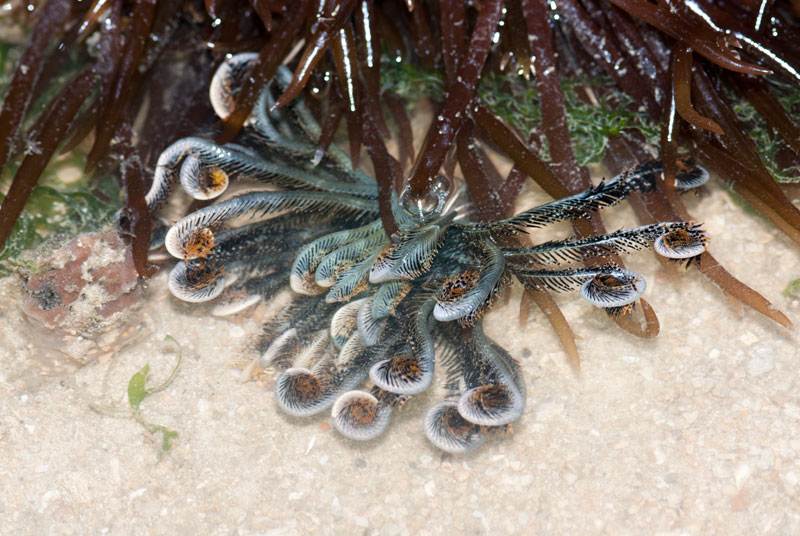 |
| Feather star |
I did not take much notice of sea cucumbers today but I did came across one
thorny sea cucumber (
Colochirus quadrangularis) and one
orange sea cucumber.
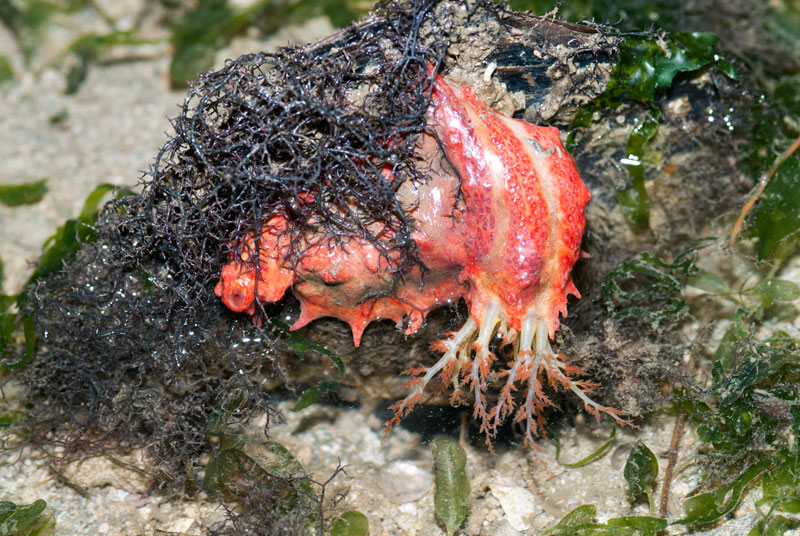 |
| Thorny sea cucumber |
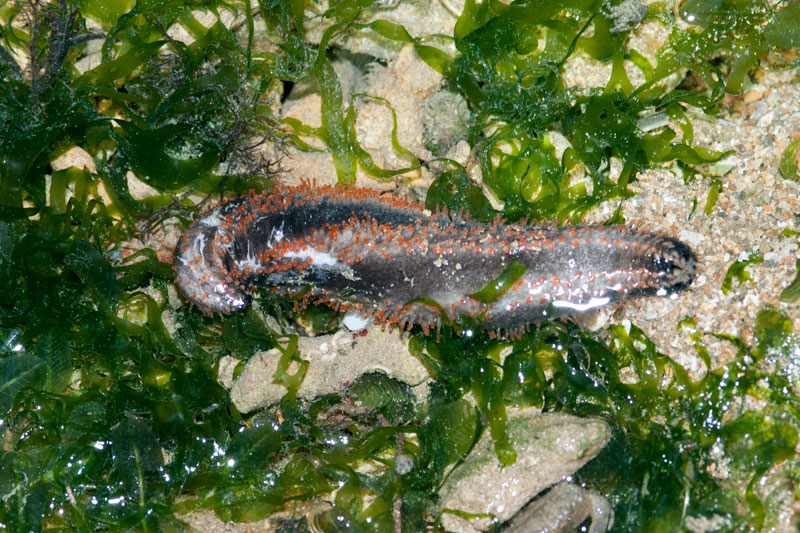 |
| Orange sea cucumber |
At the southeastern side of the island, it was a land mine of
white sea urchins (
Salmacis sp.).
 |
| Small white urchin and a tiny painted sand star. |
I came across one that is half dead. I could see what is inside the urchin, but unfortunately, my camera does not do justice to what I saw. Checking the sea urchin anatomy online, the pinkish jelly-like substance are the gonads (sex organs of the sea urchin).
 |
| Half dead. The spines are still moving. |
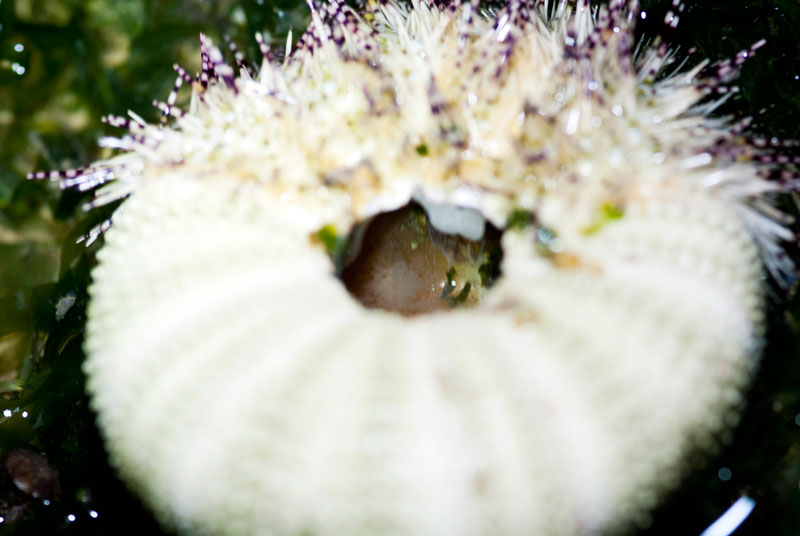 |
| Inside of the sea urchin (from the mouth). |
Other than the active stone crabs, the
orange-striped hermit crabs (
Clinanarius infraspinatus) are out busy feeding on the shore. The orange-striped hermit crabs are easy to spot with large jerking movements from a shell and orange pincers sticking out when they are active. Once disturbed, the hermit crab retract into the shell.
 |
| Hermit crab, feeding on the seaweed. |
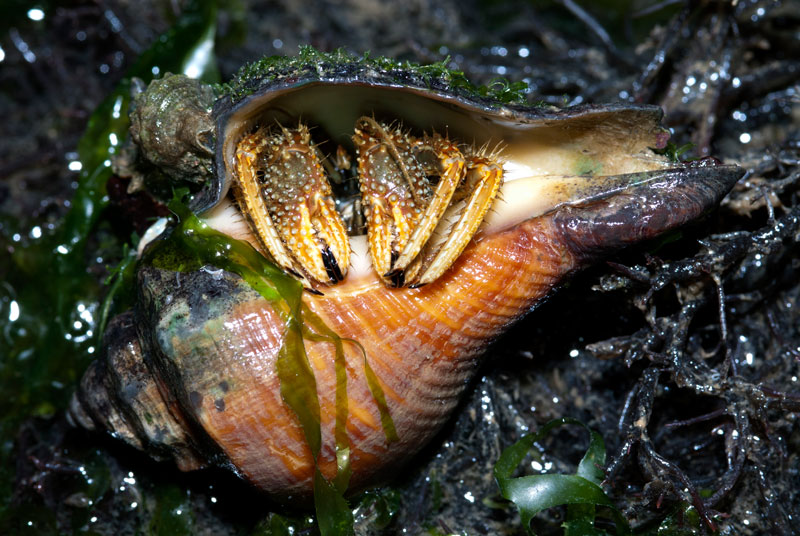 |
| Hermit crab retracted. This hermit crab cannot fit its pincers into the shell |
 |
| Another hermit crab emerging from its shell. |
There were a few of this anemone seen on the island today. I think this is a
peachia anemone.
 |
| Peachia anemone |
Large cluster of
posy anemone can be seen at the northern part of the island. They looked like giant
broad zoanthid (
Palythoa mutuki) but the thick tentacles of the posy anemone distinguishes them from the zoanthids. The posy anemone looks like a pink sunflower in the sea.
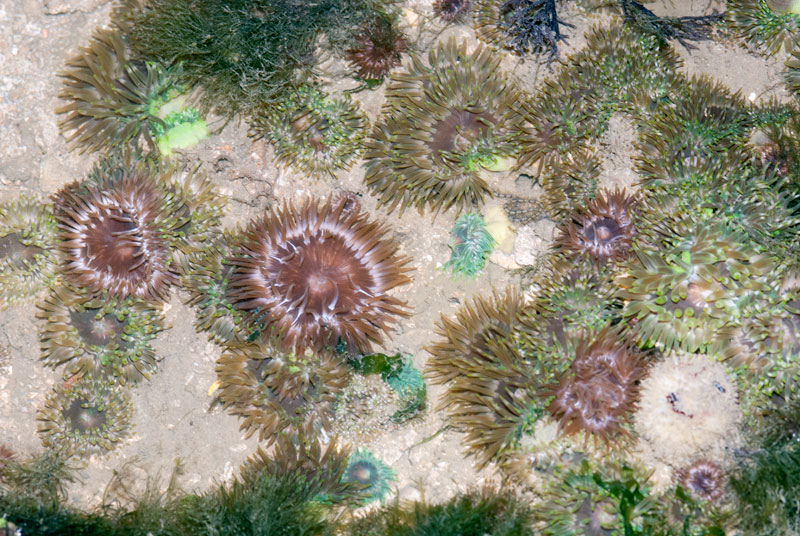 |
| Large group of posy anemones |
 |
| Single posy anemone. Looks like sunflower. |
 |
| Bulb-tiped tentacles. |
Nearby, there was an
ornate leaf slug (
Elysia ornata). It does not look to be of a good state, with a pair of rather crumpled 'wings' (parapodia).
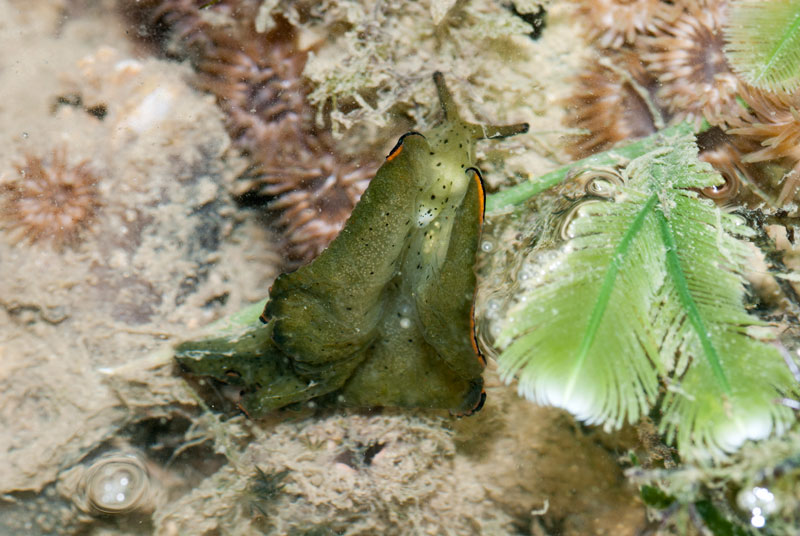 |
| Ornate leaf slug |
 |
| Damaged pair of 'wings'? |
Also, there were a few
hairy sea hares (
Bursatella leachii), some of them looked stressed and produced purple ink when I transported to a shallow pool.
 |
| Hairy sea hare |
 |
| Hairy sea hare and the remains of the purple ink. |
Next to the hairy sea hares was an
extraordinary sea hare (
Aplysia extraordinaria), I think, moving about slowly on a patch of spoon seagrass. It was in a dark shade of brown and white spots.
 |
| Extraordinary sea hare? |
 |
| Rhinophores (two 'antennas') and oral tentacles (two frilly flaps). |
I love to photograph the cute looking
purple climber crabs and predawn trips are the best to photograph them as they are less sensitive to human presence. These crabs can be easy found feeding on algae on boulders or jetty pillars.
 |
| Purple climber crab |
An interesting find for this trip would be this anemone, which Kok Sheng said that he has seen this before at Cyrene reef. Mei Lin was the one who spotted this pretty anemone.
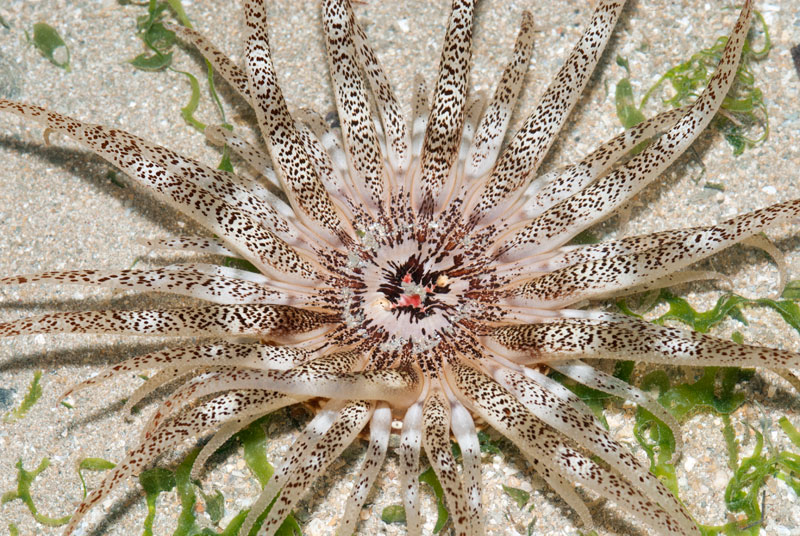 |
| Unknown anemone |
This anemone has yet to be identified. It has a pinkish oral disk with tiny bumps on its tentacles and bumpy body column.
 |
| Oral disk. |
 |
| Tentacles with tiny bumps on the underside. |
 |
| Bumps on body column. |
And to end off the trip, Mei Lin also found a
pink sand dollar (
Peronella lesueuri).
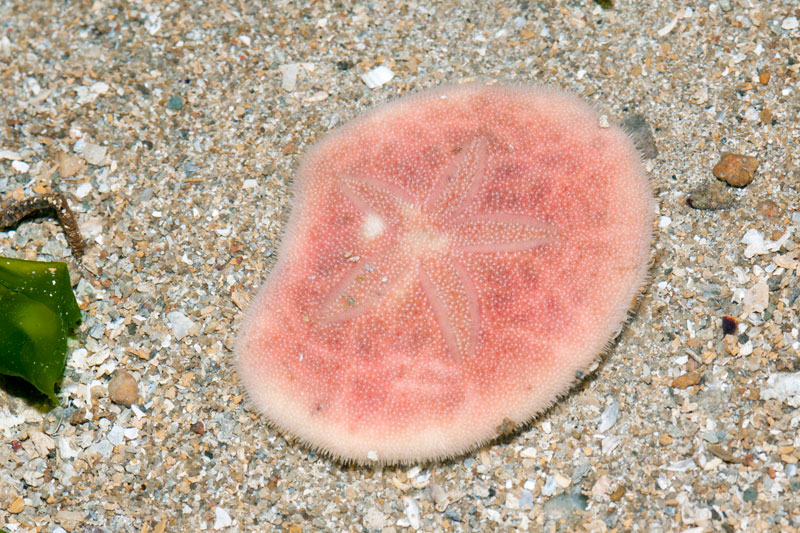 |
| Pink sand dollar |
 |
| Underside |
It was a great day on Pulau Sekudu, though rather tiring as it was a long low tide window of 2.5 hours.
This trip was made possible with permit and permission from the National Parks Board (NParks) and Chay Hoon for the boat arrangements. We will be making another trip here in two days' time.
Posts by others on this trip:
Chay Hoon on her
Facebook.
Marcus Ng on his
Facebook.
Kok Sheng -
Sekudu survey with interesting sightings
Ria -
Spongeless on Sekudu

















































No comments:
Post a Comment